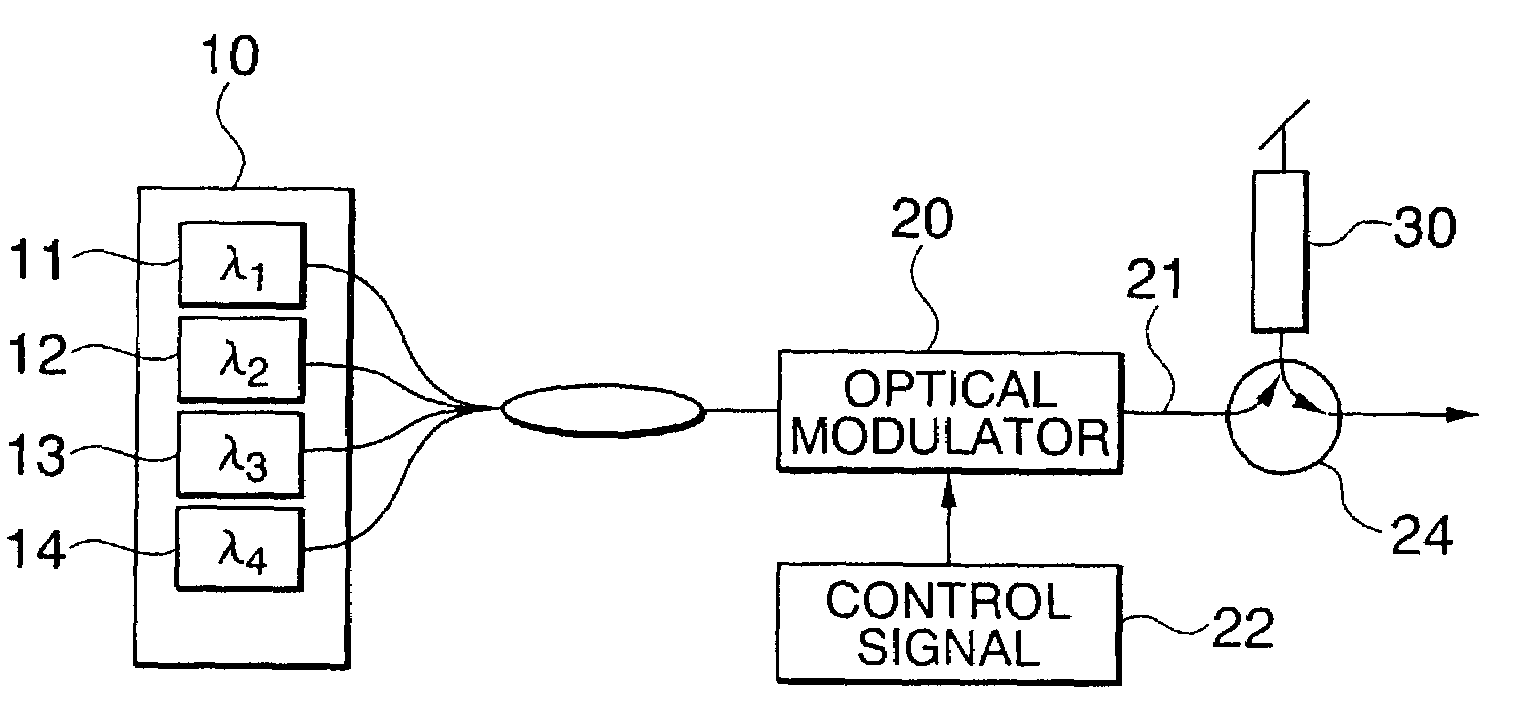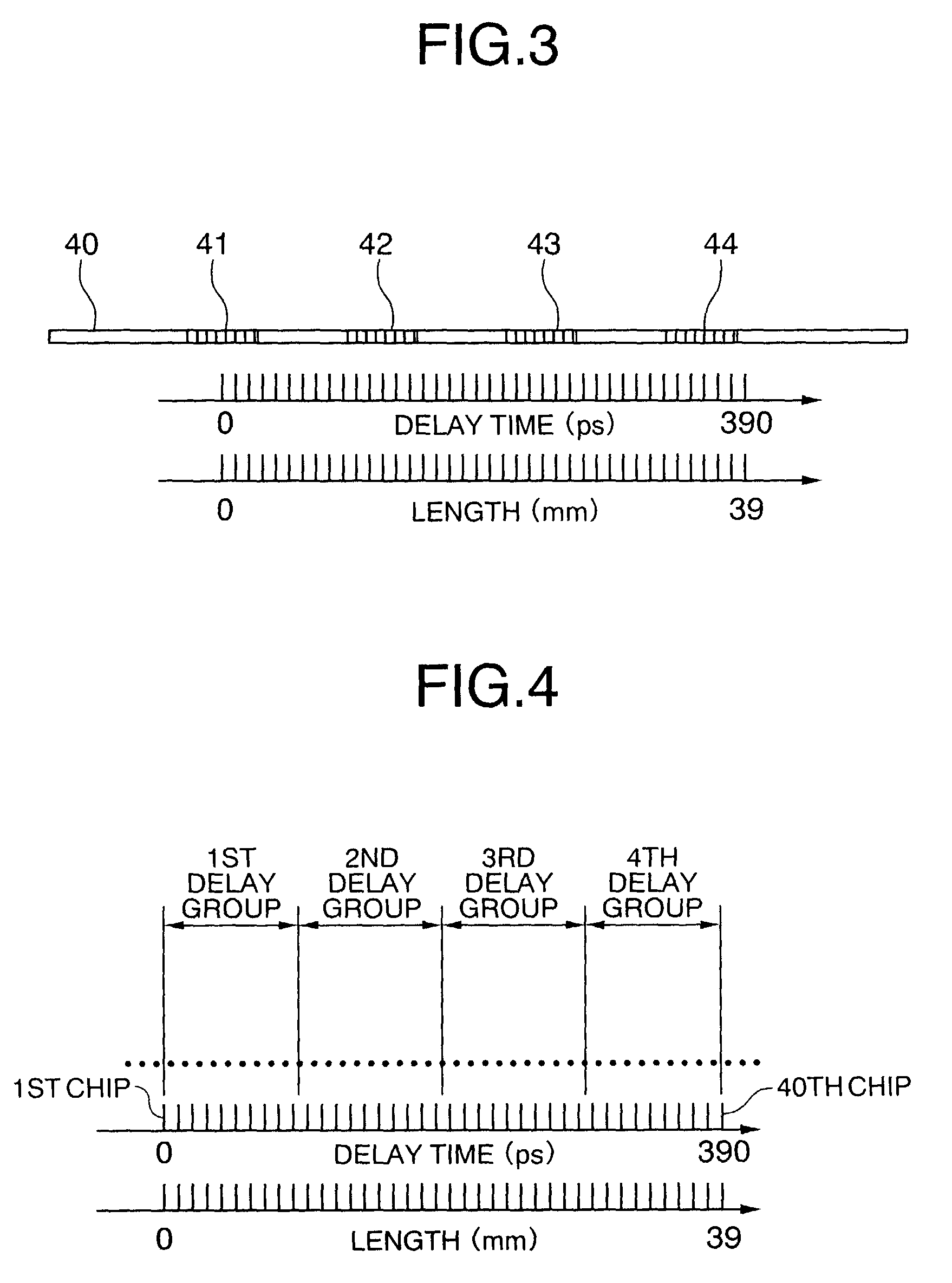Optical encoding method and encoder for optical code division multiplexing
a technology of optical code division and optical encoding, applied in the field of optical encoding methods and optical encoders for use in optical communication, can solve the problems of limiting the data transmission rate, reducing the number of codes available for multiplexing, and shortened chip intervals failing to produce matching increases in the number of codes. , to achieve the effect of increasing the number of optical communication channels
- Summary
- Abstract
- Description
- Claims
- Application Information
AI Technical Summary
Benefits of technology
Problems solved by technology
Method used
Image
Examples
first embodiment
[0049]FIG. 1 shows the structure of an optical encoding system in which coding rules (1)–(5) are applied. The system employs a multiple-wavelength light source 10 including individual light sources 11, 12, 13, 14 that supply light of respective wavelengths λ1, λ2, λ3, λ4 to an optical modulator 20, which operates according to a control signal 22. The optical encoding system also includes an optical circulator 24 and an optical encoder 30. The wavelengths λ1, λ2, λ3, λ4 of the light sources 11–14 correspond to the center reflection wavelengths of CFBGs (described below) in the optical encoder 30.
[0050]In the first embodiment, the data transmission rate is 10 Gbps. The wavelengths λ1, λ2, λ3, and λ4, output from the light sources 11–14 are combined, and the combined signal is input to the optical modulator 20. The optical modulator 20 modulates the combined signal according to the control signal 22, thereby generating a data signal 21, which is an arbitrary digital pulse signal with a...
second embodiment
[0063]In the first embodiment described above, although different encoded pulse trains (optical codes) output from the same optical encoder may overlap, interference is avoided because each pulse train is reassembled into a single pulse in the optical decoder. When the signals output from different optical encoders are multiplexed, however, further steps must be taken to ensure that pulse trains from different encoders do not interfere. In the second embodiment, two optical encoders are used and coding rule (6) is applied in addition to coding rules (1)–(5).
[0064]FIG. 7 shows the structure of an optical encoding system according to the second embodiment of the invention, omitting the optical circulators for simplicity. The system in the second embodiment includes the multiple-wavelength light source 10, optical modulator 20, and optical encoder 30 of the first embodiment and another similar optical modulator 20A and optical encoder 30A. Optical modulator 20 operates according to a c...
PUM
 Login to View More
Login to View More Abstract
Description
Claims
Application Information
 Login to View More
Login to View More - R&D
- Intellectual Property
- Life Sciences
- Materials
- Tech Scout
- Unparalleled Data Quality
- Higher Quality Content
- 60% Fewer Hallucinations
Browse by: Latest US Patents, China's latest patents, Technical Efficacy Thesaurus, Application Domain, Technology Topic, Popular Technical Reports.
© 2025 PatSnap. All rights reserved.Legal|Privacy policy|Modern Slavery Act Transparency Statement|Sitemap|About US| Contact US: help@patsnap.com



